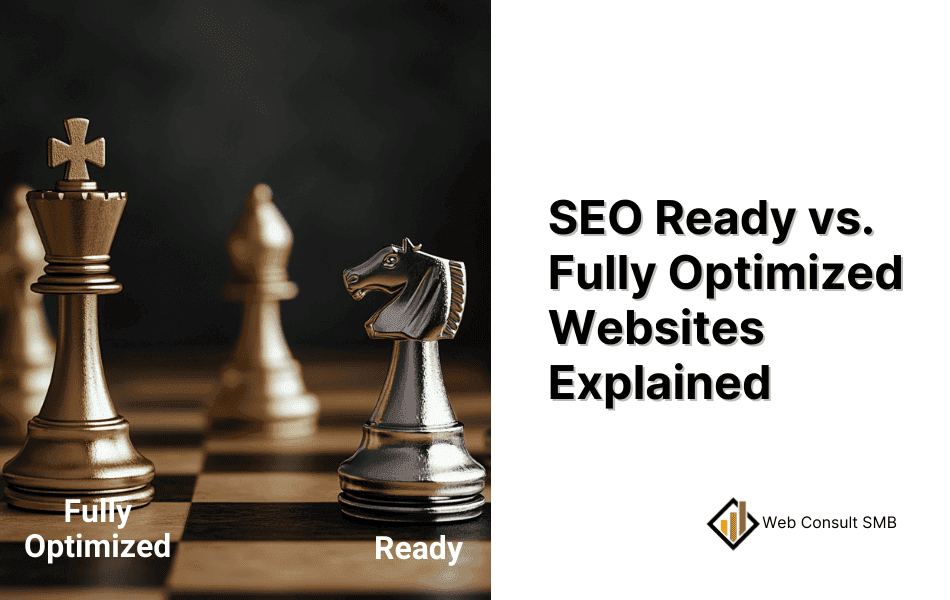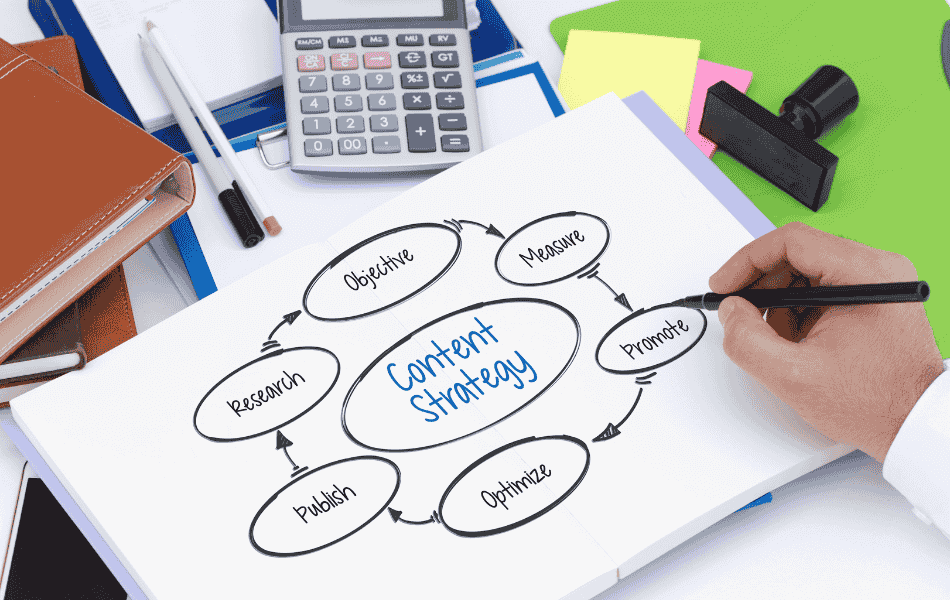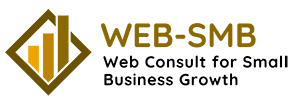SEO Ready Website vs. Fully Optimized Website Explained


Table of Contents
Key Highlights
- SEO Ready Websites: These have a solid technical foundation, allowing search engines to crawl and index the site efficiently.
- Fully Optimized Websites: Go beyond the basics by leveraging strategic on-page and off-page SEO techniques to improve rankings and attract the right audience.
This blog dives into the distinction between these two stages, covering critical topics such as:
- Site Structure: Organizing pages for better navigation and search engine comprehension.
- Content Optimization: Creating valuable, keyword-rich content tailored to your audience.
- Keyword Research: Identifying search terms that align with user intent.
- Link Building: Earning quality backlinks to boost credibility and authority.
The guide also provides actionable steps to transition from an SEO-ready foundation to a fully optimized, high-performing website that drives organic traffic and conversions. Key insights include optimizing Core Web Vitals, refining user experience, and prioritizing high-quality content.
Google Search Console is an essential tool for monitoring website performance and ensuring proper indexing. Learn more here.
Introduction
In the world of digital marketing, search engine optimization (SEO) is essential for online success and is often part of search engine marketing strategies. Think of your website as your digital storefront—its success relies on how easily it can be found and accessed by your audience.
A strong SEO strategy consists of two interconnected stages:
- Making a website SEO-ready:
- Establishing a solid technical foundation.
- Fully Optimizing It:
- Enhancing content, user experience, and authority to achieve better rankings.
Both stages are crucial.
To succeed, you need to focus on technical SEO, deliver an exceptional user experience, and create valuable, engaging content that meets the needs of your audience. Together, these elements help your website stand out and thrive in today’s competitive digital landscape.
Understanding SEO Ready and Fully Optimized Websites

An SEO-ready website is the foundation for being found online. Think of it as a well-lit store with clear signs and organized shelves, designed to attract visitors.
To take it further, full optimization makes your site perform better by using advanced strategies. This includes adding relevant keywords to your content and building quality backlinks—much like promoting a store through sales, events, and customer engagement.
1. Defining “SEO Ready” Websites
An SEO-ready website is designed with search engine requirements in mind, ensuring it’s functional and accessible for both search engines and users—not just visually appealing. It includes technical tools like XML sitemaps. Read about implementing sitemaps on Moz’s Beginner’s Guide to SEO.
Core Features of an SEO-Ready Website:
- Technical Tools:
- Includes essentials like Google Search Console, XML sitemaps, and mobile-friendly design.
- Setting up Google Search Console for your website.
- Read more on How to setup Google Search Console?
- Site Structure:
- Organized navigation with clear, concise URLs.
- Security:
- A secure HTTPS connection to build trust and improve rankings.
Think of an SEO-ready website as a blank canvas, prepared for optimization. It lays the groundwork for adding valuable content, targeted keywords, and quality backlinks to maximize visibility and rankings in search results.
2. What Does “Fully Optimized” Mean in the Context of SEO?
A fully optimized website builds on an SEO-ready foundation with strategies that improve visibility and attract targeted traffic from search engines. It ensures every aspect of your site aligns with search engine preferences and user needs.
Key Components of a Fully Optimized Website:
- On-Page Optimization:
- Enhances content, meta tags, and images using relevant keywords that match search intent.
- Focuses on creating valuable, user-focused content that complies with search engine guidelines.
- Off-Page Optimization:
- Builds trust and authority through high-quality backlinks from reputable sources.
- Strengthens brand presence with active social media engagement and audience interaction.
In short, a fully optimized website goes beyond technical readiness to become a competitive, high-performing platform that drives organic traffic and increases brand visibility.
The Initial Steps Towards SEO Readiness

Building an SEO-ready website is essential in today’s competitive online world. It serves as the foundation of your digital presence. Without this strong base, which is a good thing, your efforts may falter, much like constructing a house on unstable ground.
An SEO-ready website enhances your website’s presence by following search engine guidelines, making it easy for search engines to crawl and index your site. This ensures that your target audience can find you.
While achieving a first-page ranking requires effort and strategic planning, starting with a well-prepared website sets you up for long-term success.
1. Key Technical Foundations
Technical SEO ensures your website runs smoothly and performs optimally for both search engines and users. Think of it as laying a strong foundation for your digital presence, much like constructing a sturdy house.

Essential Elements of Technical SEO:
- Clear URL Structure:
- Organized, descriptive URLs make navigation intuitive for visitors and help search engines understand your site better.
- Core Web Vitals:
- These Google metrics measure page speed, interactivity, and stability.
- Enhancing these ensures faster load times, smoother interactions, and a better overall user experience.
- Ensure your website’s security with HTTPS. Learn why HTTPS is a ranking signal on W3C.
Neglecting technical SEO can severely impact your website’s visibility and performance. Without a strong technical base, even the best content and keywords may fail to deliver results. Focusing on these elements ensures your site is optimized for both search engines and your audience, driving more traffic and engagement.
2. Importance of User Experience
While technical SEO is essential, a great user experience (UX) is the cornerstone of achieving lasting results. The ultimate goal of SEO is to attract and retain visitors who find value in what you offer. A seamless, enjoyable user experience keeps them engaged and encourages further interaction.
Key Elements of a Positive User Experience:
- Simple Navigation:
- Visitors should find what they need quickly and easily.
- Clear Calls to Action (CTAs):
- Guide users toward desired actions like signing up or making a purchase.
- Mobile Responsiveness:
- Ensure your site looks and functions well on all devices.
A user-friendly website reduces bounce rates, increases engagement, and sends strong positive signals to search engines. This not only improves rankings but also drives more organic traffic, ultimately boosting your site’s performance and conversions.
Diving Deeper into Fully-Optimize Website

Moving from an SEO-ready website to a fully optimized one requires implementing advanced strategies that enhance visibility and attract targeted traffic.
Think of it this way: SEO readiness is like having a finely tuned car, while full optimization is using that car to consistently win races.
This process goes beyond the basics. It involves tailoring strategies to your specific niche, audience, and goals.
By aligning your website with the unique needs of your target market, you not only improve your search rankings but also stand out from competitors. This approach ensures you attract the right audience, increase engagement, and drive more conversions.
1. On-Page SEO Strategies
On-page SEO is like designing the interior of your home—it makes your website inviting for visitors while boosting its search rankings. The foundation of on-page SEO lies in keyword research, which helps you understand what your audience is searching for on specific keywords on Google.
Key On-Page SEO Techniques:
- Keyword Placement:
- Use targeted keywords naturally in:
- Page titles and headings
- Meta descriptions
- Alt text for images
- Use targeted keywords naturally in:
- High-Quality Content:
- Focus on creating informative, engaging, and valuable content that aligns with your audience’s needs.
- Avoid keyword stuffing, as it can harm your rankings.
Think of keywords as signposts guiding users to your website. By combining well-placed keywords with content that solves problems and adds value, you satisfy both search engines and readers, leading to better rankings and higher engagement.
Resources:
- Learn how to conduct keyword research effectively with Ahrefs’ Keyword Research Guide.
- Discover actionable on-page SEO techniques on Yoast’s On-Page SEO Guide.
2. Off-Page SEO Techniques
Off-page SEO strengthens your website’s credibility by earning trust and endorsements from external sources and includes strategies like social media marketing. Think of it as networking—when reputable websites vouch for you, it builds trust with both users and search engines.
Key Off-Page SEO Strategies:
- Quality Backlinks:
- Backlinks are like votes of confidence for your content. Gaining links from respected sites in your industry signals to search engines that your content is valuable and trustworthy.
- Focus on earning backlinks through guest blogging, creating shareable content, and building relationships with industry influencers.
- Social Media Engagement:
- Active participation on social platforms helps grow your audience, build a community, and enhance brand visibility. It also creates opportunities for your content to be shared and linked back to your site.
- Domain Name Selection:
- A memorable, relevant domain name impacts how users perceive your brand and improves search rankings. Just like a catchy business name, a strong domain name aids in brand recognition and drives clicks from search results.
By implementing these off-page techniques, you build authority and trust, making your site more appealing to search engines and users alike. This ultimately leads to better rankings and increased organic traffic.
Resources:
- For off-page strategies like guest blogging and influencer collaboration, visit Neil Patel’s Off-Page SEO Guide.
Comparing SEO Ready and Fully Optimized

Websites generally fall into two categories: SEO-ready and fully optimized. While both are essential for a strong online presence, understanding their differences is critical for crafting an effective SEO strategy.
1. Performance Differences in Search Engines
The distinction between SEO-ready and fully optimized websites greatly impacts search engine performance:
- SEO-Ready Websites:
- Indexed and appear in search results but lack competitiveness for top rankings.
- Fully Optimized Websites:
- Designed to secure higher rankings, often on the first page of results.
- This leads to better visibility, increased clicks, and more organic traffic.
To rank higher, your website must align with search engine priorities:
- Relevant Content:
- Addresses user intent with naturally incorporated keywords.
- Quality Backlinks:
- Signals trust and authority to search engines.
- User Experience:
- Delivers fast loading times, mobile-friendliness, and intuitive navigation.
- Technical SEO:
- Resolves errors and strengthens the site’s foundation.
The more you invest in optimization, the more valuable and competitive your website becomes. This increases not only traffic but also the likelihood of converting visitors into customers.
2. Impact on User Engagement and Conversion Rates
A website’s primary purpose is to connect with its audience and inspire meaningful actions, such as making a purchase, signing up, or reaching out. SEO plays a key role in this by driving relevant traffic to your site.
How Fully Optimized Websites Enhance Engagement and Conversions:
- Focus on User Behavior:
- Fully optimized websites analyze and adapt to user behavior, tailoring content, design, and features to align with audience expectations.
- Seamless User Experience:
- Features like clear navigation, fast load times, and mobile responsiveness make browsing enjoyable and efficient.
- Understanding Audience Needs:
- By addressing specific challenges and preferences, your website becomes a resource that guides visitors toward desired actions.
A fully optimized website functions like a well-oiled machine, leading users effortlessly from discovery to conversion. The result?
- Higher Engagement:
- Visitors stay longer and explore more pages.
- Lower Bounce Rates:
- Users find the information they need, reducing exits.
- Increased Conversion Rates:
- More visitors take meaningful actions, driving business success.
Comparison Table:
|
Aspect |
SEO-Ready Websites |
Fully Optimized Websites |
|
Core Features |
– Clear site structure for easy navigation. – Mobile responsiveness for seamless access. – Secure HTTPS connections for trust and data protection. |
– Advanced on-page and off-page strategies like keyword targeting and backlink building. – Engaging, audience-focused content. – Enhanced user experience for better engagement and retention. |
|
Purpose |
Provides the foundation for search engines to crawl and index your site. |
Focuses on visibility, attracting the right audience, and achieving long-term growth. |
|
Limitations |
Lacks advanced strategies to drive significant traffic or conversions. |
Designed to secure top rankings, driving increased traffic and conversions. |
Remember: SEO is not a one-time task but a continuous journey. Starting with a solid SEO-ready foundation and progressing to full optimization ensures long-term success in driving traffic, engagement, and conversions.
Fully optimized websites transform traffic into tangible results, making them a vital tool for achieving long-term business goals.
The Journey from SEO Ready to Fully Optimized
Reaching full optimization is not a one-time task—it’s a continuous journey. SEO requires ongoing effort to stay aligned with evolving search engine algorithms and user expectations.
Key Steps in the Journey:
- Monitor Performance:
- Regularly review your website’s analytics to understand traffic patterns, bounce rates, and user behavior.
- Analyze Data:
- Use tools like Google Analytics and Search Console to identify areas for improvement and track keyword rankings.
- Adapt Strategies:
- Adjust your approach based on findings.
- This includes updating content, refining technical SEO, and staying informed about algorithm changes.
SEO is a process of constant improvement. By treating it as an ongoing journey rather than a destination, you’ll ensure your website remains competitive, visible, and effective in driving traffic and conversions over time.
1. Essential Steps
Transitioning from an SEO-ready website to a fully optimized one requires strategic planning and execution. It’s about building upon the foundation with targeted actions that drive results.
Key Steps to Take:
- Keyword Research:
- Identify the words and phrases your target audience uses in search engines.
- Use tools like SEMrush or Ahrefs to find high-intent, low-competition keywords.
- Content Creation:
- Develop engaging, informative, and valuable content that incorporates these keywords naturally.
- Focus on addressing audience pain points and providing actionable solutions.
- Backlink Building:
- Acquire high-quality backlinks from authoritative websites in your industry.
- Methods include guest blogging, creating shareable infographics, and engaging in relevant online communities.
By combining these elements, your website evolves from being functional to becoming a high-performing platform that attracts the right audience and boosts conversions.
2. Monitoring and Measuring Optimization
Optimization isn’t a one-time task—it’s a continuous cycle of monitoring, analyzing, and improving. Knowledge is your greatest asset in this process.
How to Track and Measure Effectiveness:
- Use Google Search Console:
- Identify issues affecting performance, such as crawl errors or low click-through rates.
- Gain insights into which keywords drive traffic.
- Monitor Key Metrics:
- Keyword Rankings: Understand how users are finding your site.
- Website Traffic: Track overall visitor numbers and sources.
- Bounce Rates and Conversion Rates: Gauge user engagement and effectiveness of your calls to action.
- Analyze User Behavior:
- Understand how visitors interact with your site. Use this data to refine navigation, content, and user experience.
Regularly assessing these metrics allows you to prioritize areas that need improvement and refine your SEO strategy. By approaching SEO as an ongoing process, you set the stage for sustained growth and long-term success.
Technical SEO
Technical SEO is a foundational component of any successful SEO strategy. While often overlooked, it directly impacts your website’s ability to be crawled, understood, and indexed by search engines.
1. Key Elements
- Site Layout:
- A well-structured site with logical navigation improves usability for both search engines and visitors.
- Page Speed:
- Faster-loading pages enhance user experience and are favored by search engines.
- Mobile-Friendliness:
- Responsive design ensures seamless performance across all devices.
- Fixing Errors:
- Resolving broken links and addressing crawl issues helps search engines access and index your content efficiently.
By focusing on these technical aspects, you create a website that is accessible, secure, and optimized for all devices. This not only improves search engine rankings but also provides a better experience for users, driving engagement and conversions.
2. Site Structure and Its Importance
A clear and logical site structure is the backbone of SEO readiness. Imagine visiting a cluttered, confusing website where pages are hard to find—it’s frustrating and drives visitors away. In contrast, a well-organized website offers intuitive navigation, seamless page flow, and easy access to information, creating a positive experience for users.
Why Site Structure Matters:
- User Experience:
- A logical layout helps visitors find what they need quickly, reducing bounce rates and encouraging longer engagement.
- Search Engine Crawling:
- A clear hierarchy and consistent internal linking make it easier for search engines to understand and index your website.
Best Practices for Site Structure:
- Organize content into a clear hierarchy (e.g., homepage > category pages > subcategory pages).
- Use descriptive and keyword-rich URLs for clarity.
- Maintain consistent internal links to guide users and search engines through your site.
A strong site structure not only enhances usability but also improves your search engine rankings by creating a smoother experience for everyone involved.
3. Mobile Responsiveness and Speed Optimization
In today’s mobile-first world, a responsive web design and fast-loading website is non-negotiable. With the majority of users browsing on mobile devices, optimizing your site for all screen sizes is crucial for both user experience and SEO.
Key Aspects of Mobile Responsiveness:
- Adaptive Design:
- Ensures your site adjusts seamlessly across devices like smartphones, tablets, and desktops.
- User-Friendly Layout:
- Mobile users should experience clear navigation, readable fonts, and easily clickable buttons.
Page Speed and Core Web Vitals:
Page speed plays a pivotal role as a ranking factor in user satisfaction and rankings. Slow-loading sites frustrate visitors, increasing bounce rates and missed opportunities.
Google’s Core Web Vitals provide a clear framework for evaluating and improving performance:
|
Core Web Vital |
Description |
|
Largest Contentful Paint (LCP) |
Measures how fast the main content of a page loads. |
|
First Input Delay (FID) |
Tracks how quickly a page responds to user interactions, such as button clicks. |
|
Cumulative Layout Shift (CLS) |
Assesses the stability of a page’s layout during loading to avoid unexpected shifts. |
Benefits of Optimization:
- Faster load times improve user satisfaction and engagement.
- Mobile responsiveness ensures a consistent and enjoyable experience across all devices.
- Enhanced user experience signals to search engines that your site is high-quality, boosting your rankings.
By prioritizing mobile responsiveness and speed optimization, you not only meet user expectations but also gain a competitive edge in search engine results.
Resources:
- Use tools like Google PageSpeed Insights to analyze and improve your website’s load time.
- Understand the importance of mobile-first design by visiting Browser Stacker – Mobile Design Guide.
- Improve user experience by optimizing Core Web Vitals. Check out Google’s official guidelines on Web.dev.
Content is King

Quality content is the cornerstone of successful SEO. While a well-structured website is important, it’s the relevance and value of your content that truly engages your audience and drives long-term success.
High-quality content, which can mean different things to different people, not only enhances the user experience but also strengthens all your other SEO efforts, from keyword targeting to link building.
1. Why Content Matters for SEO:
- Audience Engagement:
- Valuable content answers your audience’s questions, solves their problems, and keeps them on your site longer.
- Search Engine Ranking:
- Search engines prioritize content that is relevant, well-written, and aligned with user intent.
Building a Winning Content Strategy:
- Understand Your Audience:
- Research their needs, challenges, and search behaviors.
- Use tools like Google Trends and keyword research tools to identify relevant topics.
- Create Valuable Content:
- Provide clear, actionable, and engaging information that meets user needs.
- Avoid outdated practices like keyword stuffing, focusing instead on natural integration of relevant terms.
- Keep Content Fresh:
- Regularly update and expand existing content to stay relevant.
- Incorporate various formats like blogs, videos, and infographics to appeal to diverse preferences.
Good content goes beyond rankings—it builds trust, credibility, and loyalty among your audience. By prioritizing quality and relevance, you can elevate your website’s SEO performance and foster stronger connections with your visitors.
2. Writing for Your Audience and Search Engines
Creating content without understanding your target audience is like shooting in the dark—it’s ineffective and misses the mark. The key to successful content creation lies in aligning with search intent, which is the “why” behind a user’s search query, ultimately contributing to brand awareness.
How to Write for Both Audiences:
- Understand Search Intent:
- Determine whether users are looking for information, a product, or a service.
- Tailor your content to address their specific needs and questions.
- Write with Clarity and Purpose:
- Organize your content with clear headings and logical flow.
- Ensure your information is accurate, up-to-date, and actionable.
- Deliver Value:
- Go beyond keyword usage to provide meaningful solutions and insights.
- Establish your brand as a trusted resource by answering common questions effectively.
By focusing on quality and aligning with search intent, you create content that satisfies both your audience and search engines, boosting engagement and rankings.
3. The Role of Keywords in Content Optimization
Keywords are the backbone of SEO—they connect your content to the users searching for it. Effective keyword use ensures your content aligns with what your target audience is looking for.
Steps to Optimize Keywords:
- Keyword Research:
- Brainstorm topics relevant to your business.
- Use tools like Google Keyword Planner, SEMrush, or Ahrefs to find keywords with high search volume and low competition.
- Incorporate Keywords Naturally:
- Place them strategically in titles, headings, meta descriptions, and throughout the content.
- Avoid keyword stuffing, as it can harm user experience and rankings.
- Focus on Quality and Relevance:
- Use keywords as a guide, not the sole focus.
- Prioritize creating content that is informative, engaging, and meets user needs.
By using keywords effectively, you enhance your content’s visibility while maintaining the quality and value search engines prioritize today.
Advanced SEO Techniques for Full Optimization
Transitioning from an SEO-ready website to a fully optimized one requires advanced techniques to enhance visibility, authority, and performance. Two powerful methods for achieving this are schema markup and building a strong backlink profile.
1. Leveraging Schema Markup for Enhanced Visibility
Schema markup is a game-changing tool that helps search engines better understand your content. By adding structured data to your website’s HTML, you provide search engines with detailed context about your content, enabling them to create rich snippets in search results.
Example:
Instead of showing a plain link for a recipe, schema markup can display a visually appealing snippet with:
- An image of the dish
- Star ratings
- Cooking time
- Nutritional information
Benefits of Schema Markup:
- Higher Click-Through Rates:
- Eye-catching rich snippets encourage more clicks.
- Improved Visibility:
- Stand out from standard search results with detailed information.
- Enhanced SEO Performance:
- Increased engagement signals search engines that your content is valuable.
Implementing schema markup is like adding a spotlight to your content, making it more accessible and attractive to users and search engines alike.
Resources:
- Schema markup: Improves your content visibility in search results. Read more on Schema.org.
2. Building Quality Backlinks for Higher Ranking
Backlinks are one of the most important factors for SEO success. They act as endorsements from other websites, signaling to search engines that your content is trustworthy and authoritative.
- Key Principles for Backlink Building:
- Quality Over Quantity: Focus on securing links from reputable, relevant sites rather than amassing low-quality backlinks.
- Relevance Matters: Links from websites in your niche carry more weight than unrelated sources.
- Strategies to Build Strong Backlinks:
- Guest Blogging: Share your expertise on authoritative blogs in your industry.
- Create Shareable Content: Develop infographics, research reports, and guides that others want to link to.
- Engage with Influencers: Build genuine relationships with content creators and industry leaders to earn natural backlinks.
- Participate in Forums and Communities: Offer value in discussions to earn trust and links organically.
Why Backlinks Matter:
High-quality backlinks elevate your site’s credibility and boost rankings, helping you outperform competitors. While building a strong backlink profile takes time and effort, the long-term benefits—improved authority, visibility, and organic traffic—are well worth the investment.
Resources:
- Quality backlinks: Visit Semrush Guide for a complete guide on backlinks.
Common Pitfalls to Avoid in SEO Optimization

While following SEO best practices is vital, avoiding common mistakes is equally important. Missteps can harm your site’s performance, hurt rankings, and diminish your overall credibility. Striking the right balance in optimization is the key to sustainable success.
1. Over-Optimization
Over-optimization can be as harmful as neglecting SEO entirely. Going too far with tactics like keyword stuffing or building excessive, low-quality backlinks can lead to penalties from search engines.
Common Over-Optimization Mistakes:
- Keyword Stuffing:
- Overloading content with repetitive keywords disrupts readability and flags search engines for spammy behavior.
- Low-Quality Backlinks:
- Accumulating links from irrelevant or unreliable sources can damage your website’s authority.
- Quick-Fix Techniques:
- Using black-hat strategies or shortcuts may yield short-term results but can severely harm your website’s reputation in the long run.
How to Avoid Over-Optimization:
- Focus on natural keyword integration that benefits readers and aligns with search intent.
- Build backlinks organically by offering high-value content that others want to link to.
- Prioritize quality over quantity in every aspect of your SEO strategy.
A successful SEO plan centers on creating valuable, high-quality content and building trust and authority over time. Avoid shortcuts and invest in sustainable, long-term growth.
2. Ignoring User Experience
SEO isn’t just about keywords and backlinks—it’s about creating a seamless and enjoyable experience for users. Even if your website ranks well, poor user experience can lead to high bounce rates and lost opportunities.
What User Experience Entails:
- Ease of Navigation:
- Visitors should easily find the information they’re looking for.
- Design and Readability:
- Clean layouts and well-organized content improve engagement.
- Mobile-Friendliness:
- Your site must work seamlessly across all devices.
- Page Speed:
- Slow-loading pages drive users away and harm rankings.
Why UX Matters for SEO:
A great user experience keeps visitors engaged, encourages them to explore more pages, and drives conversions. Search engines reward sites that provide a positive experience by ranking them higher.
How to Prioritize User Experience:
- Optimize your site for mobile and improve loading times using tools like Google’s PageSpeed Insights.
- Share valuable, interesting, and easy-to-digest content.
- Ensure navigation is intuitive and CTAs are clear and compelling.
By balancing technical optimization with a strong focus on user experience, your website will attract and retain visitors while achieving sustainable SEO success.
Conclusion
Understanding the distinction between SEO-ready and fully optimized websites is essential for achieving online success.
While SEO-ready websites provide the technical foundation for search engine optimisation visibility, fully optimized sites go further by enhancing user experience and delivering high-quality content.
This results in better rankings and more conversions.
By staying up-to-date with SEO trends and continuously refining your approach, you can elevate your website’s performance, drive organic traffic, and remain competitive in the ever-evolving digital landscape.
Remember, SEO is a journey of adaptation and improvement—success comes to those who commit to optimizing for both search engines and users.
Frequently Asked Questions
What are the first steps to take a website from SEO ready to fully optimized?
- Conduct detailed keyword research to understand what your audience is searching for.
- Develop a content plan based on this research.
- Perform a technical SEO audit to identify and fix any issues affecting user experience or search engine accessibility.
How does content quality affect SEO optimization?
High-quality content is crucial for engaging users and achieving better organic search performance. Search engines prioritize content that provides value, answers user queries, and aligns with search intent. Quality content helps websites rank higher and supports overall SEO efforts.
Can a website be SEO ready but not fully optimized for mobile?
Yes, a website can be SEO-ready with strong technical foundations but still not fully optimized for mobile devices. This can negatively impact user experience and rankings, as search engines favor mobile-friendly websites.
How often should SEO strategies be reviewed for effectiveness?
SEO strategies should be reviewed every three months. Use tools like Google Search Console and Bing Webmaster Tools to monitor performance, identify areas for improvement, and refine your approach based on search rankings, website traffic, and user behavior.
What are the most common mistakes in transitioning from SEO ready to fully optimized?
- Ignoring technical SEO improvements.
- Neglecting user experience, such as site navigation and mobile responsiveness.
- Overusing keywords in content (keyword stuffing).
- Failing to build high-quality backlinks.
- Using shortcuts or outdated tactics that harm long-term performance.
By addressing these common issues and maintaining a strategic approach, you can ensure a smoother transition to full optimization and achieve lasting success.
